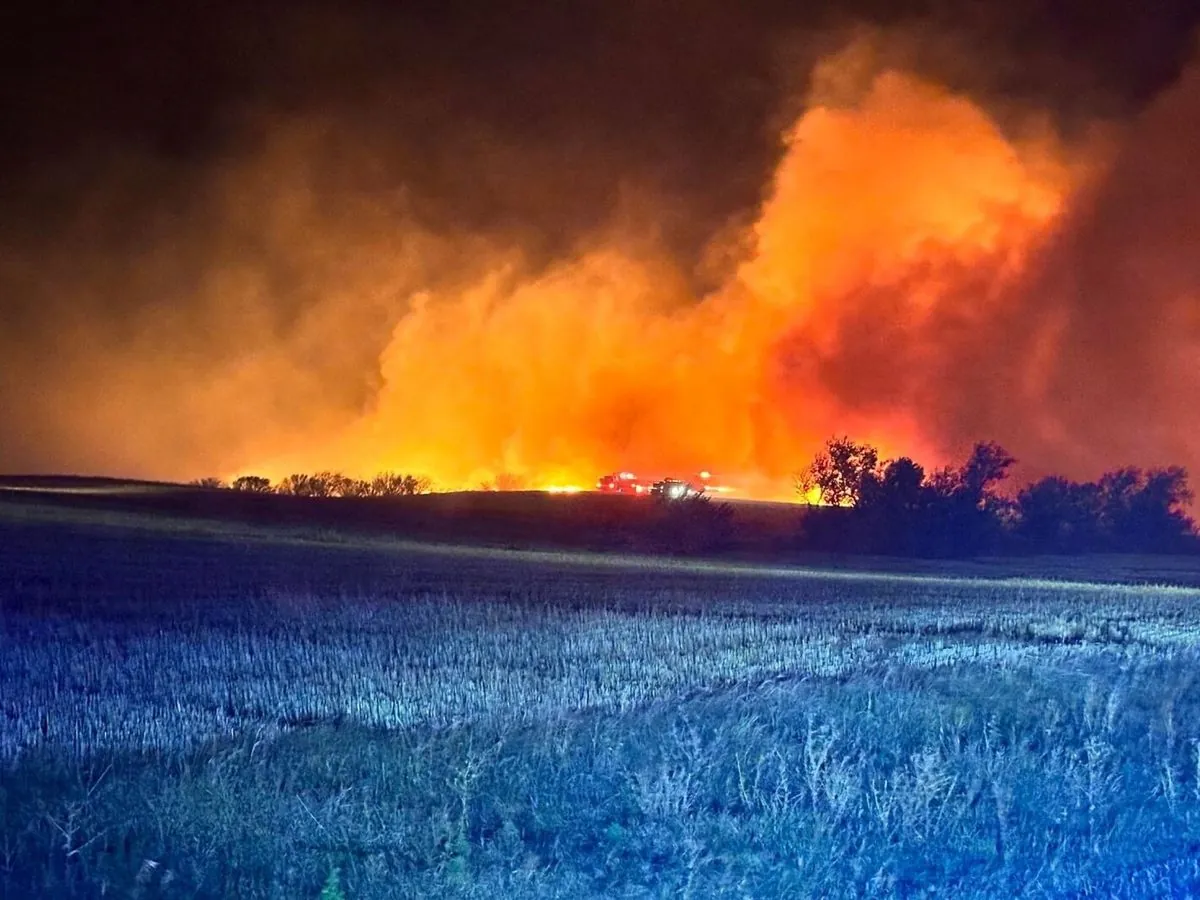Western North Dakota faced a devastating series of wildfires over the weekend, driven by powerful winds and exacerbated by dry conditions. The fires, which raged across the state's oil fields, agricultural lands, and rugged Badlands terrain, resulted in one fatality and forced more than 100 residents to evacuate their homes.
Johannes Nicolaas Van Eeden, a 26-year-old South African national, tragically lost his life during a large fire near Ray in northwest North Dakota. The circumstances surrounding his death are currently under investigation by the Williams County Sheriff's Office.
State officials reported six significant wildfires, with four nearly or completely contained as of Monday, October 7, 2024. The Elkhorn Fire near Grassy Butte, covering 44 square miles (114 square kilometers), was 20% contained, while the Bear Dean Fire near Mandaree, spanning 18 square miles (47 square kilometers), remained uncontained.
The wildfires have caused substantial damage, including the destruction of at least two homes and numerous outbuildings. Power lines, vehicles, and other structures were also affected. The full extent of livestock losses remains unclear, with farmers and ranchers still assessing the situation.
Doug Burgum, the governor of North Dakota, toured the affected areas and met with local officials. He stated that the previous Saturday might be recorded as one of the worst fire days in the state's history in terms of land burned.
North Dakota, the 19th largest state by area in the U.S., is known for its diverse landscape, including the Badlands formed by erosion over millions of years. The state's economy heavily relies on agriculture and energy production, with the Bakken formation making it a major oil-producing region. These factors contribute to the complexity of managing wildfires in the area.
The state's continental climate, characterized by hot summers and cold winters, creates conditions conducive to extreme weather events. North Dakota has a long history of grassland fires dating back to pre-settlement times, and the current situation highlights the ongoing challenges faced by the region.
Local, state, tribal, and federal agencies have joined forces to combat the fires, with additional support from National Guard firefighters and assistance from Montana and New Mexico. The state's strong tradition of volunteer firefighting in rural areas has also played a crucial role in the response efforts.
"We do have to lean forward on this. We know that we're probably here until it snows. That's the honest-to-God-truth that no one wants to hear."
As the region continues to battle these wildfires, officials are closely monitoring weather conditions. The warm and dry pattern is expected to persist in western North Dakota at least through Thursday, October 10, 2024, with the potential for wind gusts up to 30 mph (48 kph) later in the week.
The ongoing fire risk underscores the need for continued vigilance and preparedness in the face of challenging environmental conditions. As North Dakota works to overcome this crisis, the resilience of its communities and the dedication of its emergency responders remain at the forefront of the state's response to this natural disaster.
